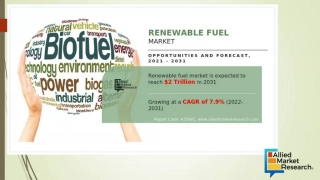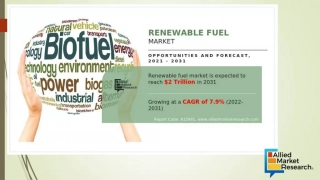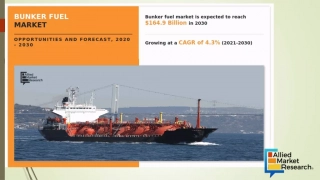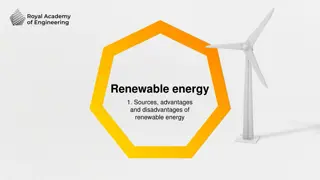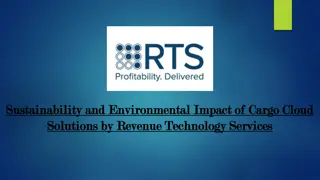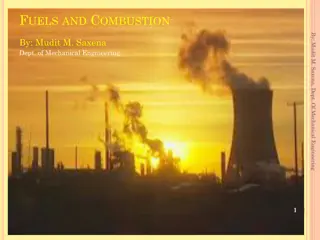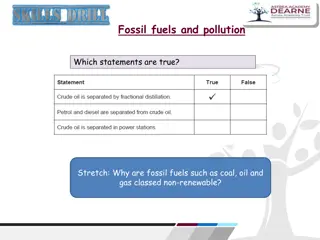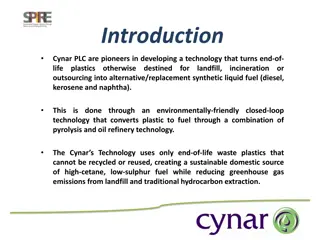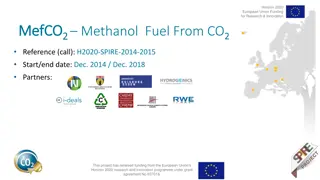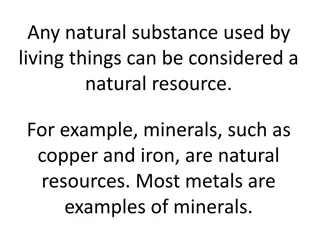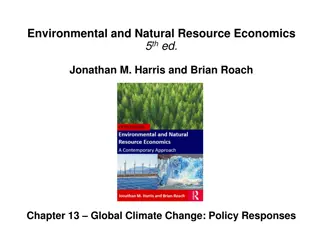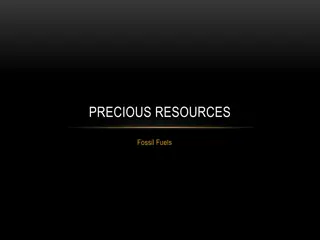Environmental Impact of Conventional Fossil Fuels: Advantages and Disadvantages
There are advantages and disadvantages to using fossil fuels such as coal, petroleum, and natural gas. While these fuels are relatively cheap and easy to use, they also cause major environmental damage through land degradation and air pollution. Extracting and burning fossil fuels release harmful substances like carbon dioxide, sulfur dioxide, and mercury, leading to smog, acid rain, and air pollution.
Download Presentation

Please find below an Image/Link to download the presentation.
The content on the website is provided AS IS for your information and personal use only. It may not be sold, licensed, or shared on other websites without obtaining consent from the author.If you encounter any issues during the download, it is possible that the publisher has removed the file from their server.
You are allowed to download the files provided on this website for personal or commercial use, subject to the condition that they are used lawfully. All files are the property of their respective owners.
The content on the website is provided AS IS for your information and personal use only. It may not be sold, licensed, or shared on other websites without obtaining consent from the author.
E N D
Presentation Transcript
Renewable Energy Utilization Renewable Energy Utilization EP EP409 409, , 4 4th thLevel course Dept.: Engineering of Power and Electrical Dept.: Engineering of Power and Electrical Machines Machines 1 1st stlecture , April lecture , April 2021 Level course 2021 Instructor: Dr. Hatim G. Abood PhD, Electrical Power Engineering hatim.abood@uodiyala.edu.iq hatim.abood@gmail.com
Environmental impact of conventional fossil fuel Environmental impact of conventional fossil fuel Natural Resources: There are advantages (+) and disadvantages (-) to using any energy source. Extraction and use of any resource carries an environmental cost that must be weighed against the economic benefit. Non-renewable Resources Nonrenewable resources exist in a fixed amount. They are renewed very slowly or not at all. Some of these resources include: Fossil fuels, uranium, rocks, and minerals Fossil Fuels: Fossil fuels are fuels formed by natural processes, such as the anaerobic decomposition of buried dead organisms Fossil fuels take millions of years to form (can exceed 650 million years) and contain high amounts of carbon Fossil fuels include: Coal Petroleum (Oil)Natural Gas Fossil Fuels: Fossil fuels are relatively cheap and easy to use once extracted. However, they cause major environmental damage. Extracting fossil fuels damages the land, and burning them (how we get energy from them) pollutes the atmosphere. Burning fossil fuels releases large amounts of carbon dioxide (CO2) into the atmosphere - Coal :Coal can be extracted from underground mines, strip (surface) mining and mountain top removal. A typical coal plant generates 3.5 million tons of CO2 per year. Burning coal also releases sulfur dioxide, nitrogen oxides, particulate matter (soot/ash), and mercury. Burning coal is a leading cause of smog, acid rain, and air pollution. Uses include: electricity generation, steel production, cement manufacturing, and as a liquid fuel
Oil and Natural Gas Oil and natural gas are extracted by drilling and pumping. The oil and natural gas industry is the largest industrial source of emissions of volatile organic compounds (VOCs), which contribute to the formation of ground-level ozone (O3)Natural gas (mostly methane) burns cleaner than oil and coal because it produces less CO2 and nitrogen oxides. Burning oil at power plants produces nitrogen oxides, sulfur oxides, sulfur dioxide, carbon dioxide, and mercury. Other harmful effects include water contamination and oil spills. - Oil and Natural GasOil uses include: transportation, home heating, plastics, and fuel for electricity generating plants. Initially, crude oil is removed from the ground, and is refined into products such as gasoline, kerosene, propane, and diesel. Natural gas uses include: combustion to generate electricity, heating, cooking, and fuel for vehicles - Uranium: Uranium is a very heavy metal that occurs in most rocks and sea water. In nuclear power plants, the nucleus of a uranium atom is split, releasing energy in the form of heat. This process is known as nuclear fission. - Uranium: Nuclear power plants are not major producers of air pollution. The clouds you see coming from the towers are just water vapor. However, nuclear power plants do produce radioactive waste. This waste is contained on site and is a relatively small amount compared to the waste created by fossil fuels. Nuclear waste is radioactive and can remain dangerous to humans for hundreds of thousands of years. Since the first nuclear power plant was built in 1954, there have been 3 meltdowns Renewable Resources: Resources that can be replaced by nature at a rate close to the rate at which they are used. Include: vegetation, sunlight, air, and surface water
Energy Crisis 1970s energy crisis - caused by the peaking of oil production in major industrial nations (Germany, United States, Canada, etc.) and embargoes from other producers 1973 oil crisis - caused by an OAPEC oil export embargo by many of the major Arab oil-producing states, in response to Western support of Israel during the Yom Kippur War (Oct. War ) 1979 oil crisis - caused by the Iranian RevolutionGcprrets.gif 1990 oil price shock - caused by the Gulf War The 2000 2001 California electricity crisis - Caused by market manipulation by Enron and failed deregulation; resulted in multiple large-scale power outages Fuel protests in the United Kingdom in 2000 were caused by a rise in the price of crude oil combined with already relatively high taxation on road fuel in the UK. North American natural gas crisis 2000-2008 2004 Argentine energy crisis North Korea has had energy shortages for many years. Zimbabwe has experienced a shortage of energy supplies for many years due to financial mismanagement. Political riots occurring during the 2007 Burmese anti-government protests were sparked by rising energy prices.
Energy crisis Energy crisis - - Cont. Cont. 2000s energy crisis - Since 2003, a rise in prices caused by continued global increases in petroleum demand coupled with production stagnation, the falling value of the U.S. dollar, and a myriad of other secondary causes. 2008 Central Asia energy crisis, caused by abnormally cold temperatures and low water levels in an area dependent on hydroelectric power. At the same time the South African President was appeasing fears of a prolonged electricity crisis in South Africa. "Mbeki in pledge on energy crisis". Financial Times. Retrieved 2008- 02-10. In February 2008 the President of Pakistan announced plans to tackle energy shortages that were reaching crisis stage, despite having significant hydrocarbon reserves,. In April 2010, the Pakistani government announced the Pakistan national energy policy, which extended the official weekend and banned neon lights in response to a growing electricity shortage.[5] South African electrical crisis. The South African crisis led to large price rises for platinum in February 2008 and reduced gold production. China experienced severe energy shortages towards the end of 2005 and again in early 2008. During the latter crisis they suffered severe damage to power networks along with diesel and coal shortages. Supplies of electricity in Guangdong province, the manufacturing hub of China, are predicted to fall short by an estimated 10 GW. In 2011 China was forecast to have a second quarter electrical power deficit of 44.85 - 49.85 GW. Nepal experienced severe energy crisis in 2015 when India created an economic blockade to Nepal. Nepal faced the shortages of various kinds of petroleum products and food materials which affected severely on Nepal's economy. The Gaza electricity crisis is a result of the tensions between Hamas, who rules the Gaza Strip, and the Palestinian Authority/Fatah, who rules the West Bank over custom tax revenue, funding of the Gaza Strip, and political authority. Residents receive electricity for a few hours a day on a rolling blackout schedule.
Renewable energy is energy that is collected from renewable resources, which are naturally replenished on a human timescale, such as sunlight, wind, rain, tides, waves, and geothermal heat. Renewable energy often provides energy in four important areas: electricity generation, air and water heating/cooling, transportation, and rural (off-grid) energy services. Links: https://en.wikipedia.org/wiki/Electricity_generation https://www.iea.org/data-and-statistics?country=WORLD&fuel=Energy%20supply&indicator=ElecGenByFuel https://www.iea.org/data-and-statistics/charts
Overview Renewable energy flows involve natural phenomena such as sunlight, wind, tides, plant growth, and geothermal heat, as the International Energy Agency explains: Renewable energy is derived from natural processes that are replenished constantly. In its various forms, it derives directly from the sun, or from heat generated deep within the earth. Included in the definition is electricity and heat generated from solar, wind, ocean, hydropower, biomass, geothermal resources, and biofuels and hydrogen derived from renewable resources


